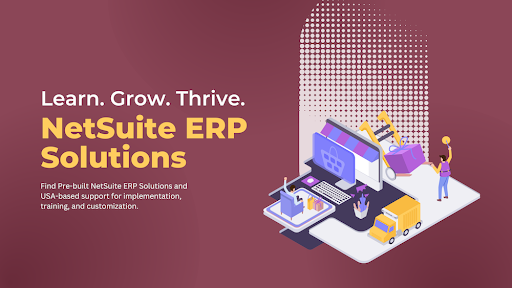Transitioning business systems can be daunting. Migrating to a new enterprise resource planning (ERP) platform like NetSuite promises improved efficiency and insights – but only with clean, accurate data.
Garbage in, garbage out rings true. Dirty data leads to incorrect reporting metrics, analytics, forecasts and more after migration. Data cleansing before a NetSuite implementation takes diligence yet pays dividends in streamlining operations.
This guide outlines key steps to tidy your data prior to changeover. Following these best practices helps avoid cost overruns during NetSuite data migration and optimizes NetSuite performance long-term.
Assess Current Data Quality
Before cleansing data, understand current data health across the organization. Document the state of affairs to determine where issues arise. Key actions include:
Profile Data Sources
Catalog transactional systems, databases, spreadsheets and other repositories that will migrate to NetSuite. Note how information flows between sources. This maps data lineage. Also record how sales, finance, operations and other teams input and manage data in legacy tools.
Measure Data Accuracy
Sample datasets from each system and manually verify inputs for completeness, uniformity and validity. For example, ensure client contact details are properly formatted in the CRM. Or confirm item costs match purchase orders in the accounting software.
Tally inaccuracies found to estimate overall error rates and common issues by type. Are records duplicated? Fields populated irregularly? Values outdated or unreasonable? Use statistical methods for large datasets: select sufficiently random, proportionally representative test samples to approximate system health.
Identify Data Governance Gaps
Review how technology, personnel and processes maintain data integrity in current environments. Pinpoint any weaknesses that allow inconsistencies. For instance, system logic may improperly calculate figures. Staff without guidelines on data entry may format records differently.
Document all gaps – tools, employee training or policies – that enable poor quality. This illuminates concrete areas to improve.
Implement Data Cleansing Best Practices
With data quality assessed and governance gaps determined, execute appropriate remedies across identified problem records, tables, databases and systems. Follow information management best practices to polish data prior to migration. Techniques differ based on issues found in assessment and data types.
Common corrective actions include:
Fill-in Blank Fields
Add any missing values appropriately: user details like full address; transaction line amounts; product codes or SKUs; quantity ordered or pricing figures. Perform advanced analysis as needed to derive reasonable substitute values.
Standardize Data Formats
Normalize how phone numbers, postal codes, dates and similar data are entered. Remove unnecessary characters, rearrange components like city and state location, or update how software saves file types. Enforce integrity checks and input masks to prevent format deviations moving forward.
Find and Fix Outliers
Detect anomalies via statistical models or rules. Investigate underlying business reasons for highly unusual values: unrealistic item costs or order volumes; faulty reading sensor inputs; age over 130 or negative height. Correct to expected value where possible or appropriately mark as exception.
Eliminate Duplicates
Match datasets to find repeated customer records, product SKUs, vendor profiles, etc. Merge duplicates preserving single best version for each unique entity. Adding match-merge routines helps safeguard against future redundant inputs.
Confirm Referential Integrity
Verify logical consistency across related data. For example, each transaction references an active customer account; all foreign keys and indexes link correctly across database tables. Cascade updates, deletions or fixes as appropriate to regain integrity.
Enrich Sparse Data
Increase information value for records lacking sufficient attributes. Geocode addresses to append city, state, zip details. Process natural language fields to classify sentiment, topics, named entities. Incorporate external public or third-party data.
Audit and Reconcile
Spot check accuracy across random samples. Tie out individual records or aggregated metrics to source documents. Confirm totals match control figures from legacy systems after adjustment. Perform reasonability checks against historical values and business expectations.
Iteratively apply data quality best practices until the information gleams – ready to unlock streamlined processes, reliable reporting and granular insights in NetSuite.
Why Choose Anchor Group for NetSuite Implementation
Anchor Group supports over 100+ satisfied NetSuite customers with expert ERP implementations. Our integrated services combine deep platform experience with data excellence to deliver rapid return on investment.
Holistic Implementation Guidance
Anchor Group seamlessly guides organizations before, during and beyond NetSuite implementation:
Upfront Strategy – We establish executive alignment on business objectives, map current workflows, build ROI models and architect the detailed technical blueprint targeting performance gains with process change.
Onsite Configuration & Data Migration – Our team configures software delivery per design specifications while executing test conversions and data imports. We refine until the system operates smoothly with your cleaner, validated data.
Post Go-Live Optimization – Launching NetSuite is just the starting line. We train users, enhance configurations, refine reports and dashboards and continually drive adoption – enabling process transformation that maximizes value.
360 Data Health Services
We help organizations govern entire information lifecycles – from strategy to architecture, integration to analytics – for sustained quality and usability. Services include:
Data Governance – Implement frameworks, policy and standards for accountability across people, processes and systems managing data – fueling consistency.
Data Quality – Develop statistical rules, routines and reference data to cleanse issues; profile metrics to monitor conditions for continuous improvement.
Master Data Management – Centrally orchestrate business-critical master records – items, suppliers, customers – synchronizing downstream processes.
Business Intelligence – Model data relationships, semantics andbehaviors for meaningful analysis and visualization – democratizing decisions.
Bottom Line Results
Our expertise integrating NetSuite’s unified platform with stronger data foundations drives tangible outcomes:
33% faster financial consolidations cycles with accurate, accessible reports
25% increase in sales productivity win rates leveraging robust account details
19% boost in supply chain efficiency through visibility into orders, inventory and suppliers
Let Anchor Group support your team in unlocking NetSuite’s full potential. Contact us to schedule your free consultation today.
Stay in touch to get more updates & news on Daily!



